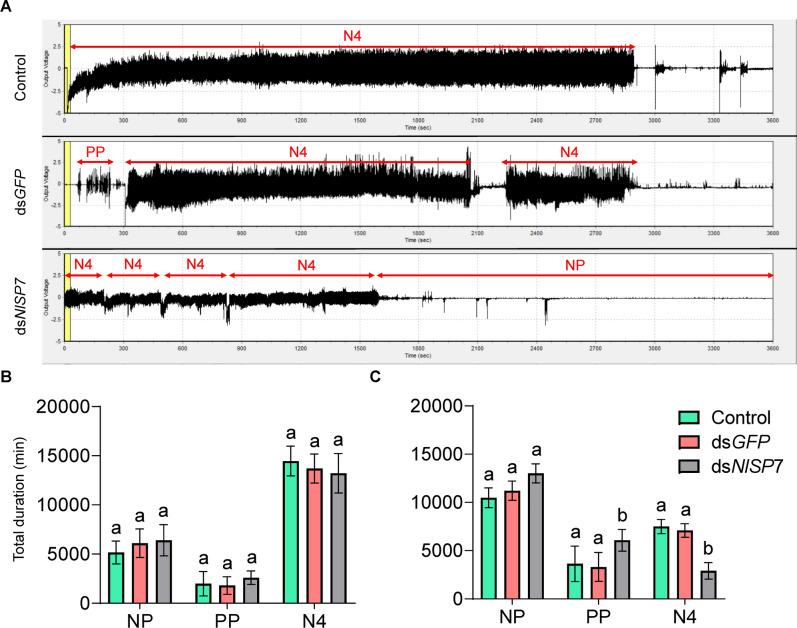Figure 5.
Brown planthoppers in three groups (the order is control, injected with dsGFP, injected with dsNlSP7) exhibit reduced feeding on two artificial diets (0 mg/l tricin and 100 mg/l tricin). (A) Overall typical view of electrical penetration graph waveforms generated by the feeding behavior of brown planthoppers on artificial diets. (B,C) data collected from 1-day-old brachypterous female adults with different treatments. NP, nonpenetration; PP, pathway phase (N1 + N2 + N3), including penetration initiation (N1), salivation and stylet movement (N2), and extracellular activity near the phloem (N3); N4, sucrose or tricin solution ingestion. B the duration of each wavelength when feeding on artificial diets without tricin (0 mg/l) and C artificial diets with tricin (100 mg/l) is shown. Electrical penetration graph data were recorded for 6 h per insect. Different letters indicate significant differences among the three treatment groups. Testing of each group was repeated 15 times (P < 0.01, Duncan’s multiple range test).

